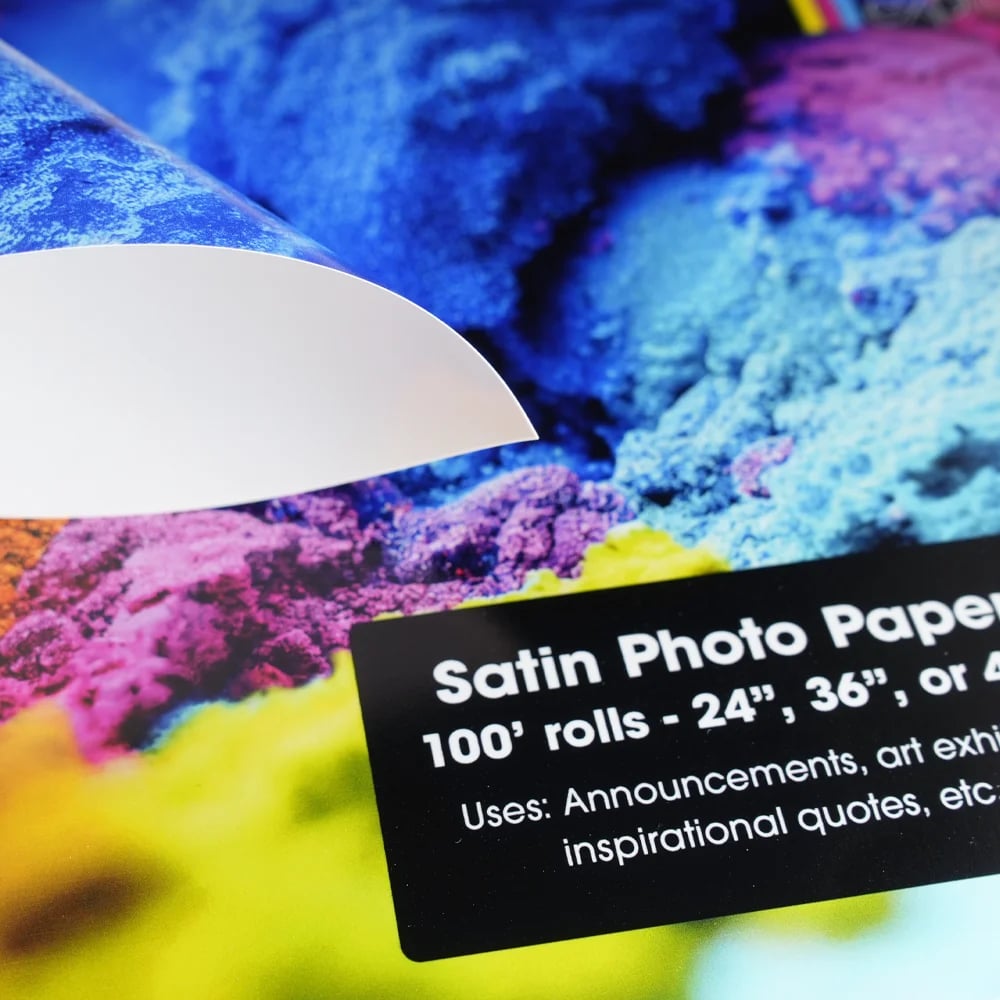Satin Paper Posters Explained
Printed on satin photo paper, it delivers vivid color and crisp text with a low-glare, easy-to-read finish. It dries instantly and hangs right away—perfect for classrooms, hallways, and school events.

What is satin poster paper, and why might schools use it?
Satin poster paper is a popular choice because it blends the best qualities of glossy and matte finishes. It has a soft sheen that makes colors look bright and lively without creating distracting glare under classroom or hallway lights. This balance makes it easier for students to read and enjoy posters, whether they’re learning from a science chart or looking at a motivational message. Unlike matte, satin feels a bit more polished and colorful, but it’s not as shiny as glossy. Many schools like satin because it looks professional, holds up well over time, and adds a special touch to displays.
What are the benefits of satin poster paper for schools?
Satin poster paper comes with several advantages that make it a smart choice for schools. Its subtle shine makes colors and details look vibrant while still being easy to read under bright lights. Teachers appreciate that satin posters resist smudges and fingerprints, so they stay neat even when handled by students. The paper also has a sturdy coating that helps posters last longer in busy hallways, classrooms, or libraries. Compared to glossy paper, satin reduces glare, which is important when students need to focus on reading. Best of all, satin provides professional-quality results without the higher price tag of specialty papers.
How do teachers and schools typically use satin poster paper?
Schools find satin poster paper helpful in many different ways. Teachers often use it for classroom charts, timelines, or learning aids since it makes content easy to see and understand. For school events, it’s great for posters announcing fundraisers, performances, or parent nights because the colors look sharp and appealing. Students also benefit from satin posters during presentations and science fairs, where readability and style both matter. Principals or administrators might use satin prints for maps, schedules, or long-term displays in common areas. Its combination of durability, color quality, and affordability makes satin a versatile favorite for everyday school needs.
How do I know which satin poster paper is right for my school project?
The right choice often depends on how and where you’ll use the poster. Heavier satin paper works best for displays you plan to keep long-term, such as classroom decorations or posters for the front office. Lighter satin paper is perfectly fine for temporary projects like student presentations or seasonal bulletin boards. It’s also a good idea to think about size. Standard classroom posters might be 24×36 inches, while smaller sheets are better for individual projects. No matter the size, satin’s smooth surface works well with most printers, making it easy for schools to create colorful, high-quality posters for any occasion.
How can schools get the best results when printing on satin poster paper?
For the sharpest, brightest results, always start with clear, high-quality images or designs. Teachers should check printer settings to ensure they’re using the correct paper type option, since many printers include presets for coated or semi-gloss papers. To avoid smudges, handle the posters carefully. Holding them by the edges or using clean hands. Laminating satin posters is another great way to protect them so they last through many semesters. Schools should also store extra paper flat in a dry place to keep it from curling. With just a little care, satin poster paper can help create durable, colorful displays that students and parents will enjoy.

